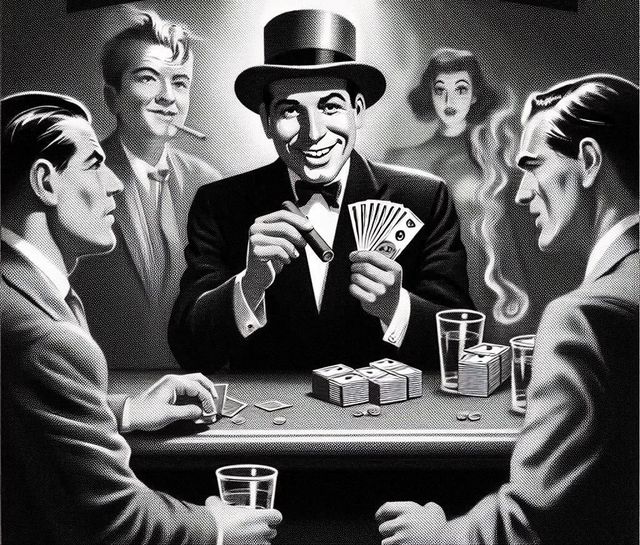-
Vijay Fafat
- Published on
A really hilarious and confusing tale which has to be read very slowly to get the full gist, as it happens in almost every single probability problem one tries to solve. How many times have you been convinced that the answer to a mathematical question related to probability is 1/2 (say) when it is actually 2/3 (and yet, if you were given the same problem a few months later, you would again say “1/2”?) That is the slippery nature of thinking about probability, event / sample space, the exact specification of the event for which you are doing the calculation, etc. a priori, a posteriori, Bayes… the eyes roll and the mind swoons. Anyway, Leslie Charteris plays precisely with this phenomenon in this swindle-reverse-swindle tale.
The swindler is one Mr. Theocritus “Tick” Way (regarding his name, it is observed that
“the fond parent who had him baptized Theocritus was only another of the human race’s uncounted casualties to misguided optimism. Even in his tenderest years, his contemporaries declined to accord him even the semi-dignified contraction of “Theo.” They abbreviated him swiftly and spontaneously to “Tick.”).
Mr. Tick is described thusly:
“In his middle forties he was still a runt, barely topping five feet in his built-up shoes, but broad and thick-set and now somewhat paunchy, a strutting little rooster of a man with all the aggressiveness with which the small ones are prone to over-compensate for their unimpressive size, and a toughly amorphous face which looked as if he had antagonized more than one person whose resentment was too convulsive to be conveyed without physical amplification. But if he was doomed by his chromosomes to be forever unformidable in a fight, he had a grasp of the immutable laws of probability that might have frightened an insecurely wired electronic brain.”
The one thing he had going for him was an uncanny knack to work out percentage odds of a given situation, be it a card trick, coin tossing, gambling games, or some other real-life mathematical probability puzzle.
“He could work out all those simple chances in his own head and even knew how to project them into the more elaborate calculation which ends up showing that the shooter has only a 49.3 per cent chance of passing when he takes the dice. The higher complexities of poker were not much harder for him. He did not have to memorize the odds of twenty-three to one against drawing two cards to make a flush, or ninety-seven to one against drawing three that would turn a pair into a full house. He could even prove on paper the paradoxical theorem that when holding two pairs against an opponent who you are sure has threes, you have a better chance of taking the pot if you discard your smaller pair and buy three new cards than if you timidly trade your maverick for just one that you hope will fill the hand.”
So there you have Mr. Way, merrily playing a “probability shark” at bars, restaurants, clubhouses, etc., drawing in people to make bets wrongly by offering confusing mental calisthenics. He has perfected it into an art-form, all perfectly legal, all incontrovertibly “scholarly”, Till he is swindled back by The Saint in a Monty Hall style game.
The story is full of mathematical calculations involving the Birthday Problem, Buffon’s Needle and Monty Hall. The style of writing is very humorous (particularly read the first 3 pages for a delightfully naughty double pun where Mr. Way tells one Mr. Steven Even, after refusing to sleep with any of his 3 daughters, “I’m sorry, but I told you when I registered, I’m a professional bookmaker. I only lay Odds.”)
This story would make a really good teaching tool in a probability course. I did not bother to check if all the calculations were correct - I’m sure they are - but instead let the flow of the story carry me around as on a lazy river on a warm raft.
